The Manward Press website claims that Andy Snyder’s Manward Letter service utilizes a “unique and battle-tested approach” to help subscribers build wealth.
But is that really the case? Or is it just another scam?
Well, I decided to join the service myself to find out.
My goal was to learn more about Snyder’s investment philosophy, see how his stock picks have worked out, and basically just see if the service is as good as he claims.
So I forked out $49 to sign up, and in this review, I’ll show you everything I found.
I’ll start with an overview of what the Manward Letter is about and what you get if you join, then I’ll break down the monthly newsletters, give you some insight into how the model portfolio has performed, and (among other things) discuss the pros and cons.
So with that said, let’s get started.
About the Manward Letter
The Manward Letter is a monthly investment newsletter run by Andy Snyder of Manward Press focused on stocks, options, gold, and crypto.
And according to the Manward Press website, the “backbone” of the service is Manward’s “proprietary Modern Asset Portfolio (MAP) theory.”
“Manward’s unique and battle-tested approach to building wealth comes alive in the pages of Manward Letter. The backbone of this popular monthly letter is Manward’s proprietary Modern Asset Portfolio (MAP) theory. In every issue, you’ll get in-depth research and commentary on stocks, options and even the cryptocurrency market.”
Source: manwardpress.com
What is Modern Asset Portfolio theory about?
Based on what Snyder explains in the first “special report” within the Manward Letter member’s area, it’s basically a spin on modern portfolio theory, which centers around the idea of constructing a diversified portfolio to maximize returns and minimize risk.
In short, Snyder believes that “things have changed” in the market since the original theory was introduced in the 1950s. And when you boil it all down, the “spin” he’s put on this strategy, at least from what I understand, revolves around interest rates.
According to Snyder, “MAP theory” has “five distinct levels” of “real” interest rates, or the 10-year Treasury rate minus inflation. And he says that each “level” of interest rates, which I’ll elaborate on further in the review, calls for its own unique “mix of assets.”
So to sum it up… the Manward Letter strategy centers around building a diversified portfolio of assets according to the current 10-year (real) interest rate.
Snyder’s specific recommendations are always changing, but right now, they include a mix of large-cap stocks in varying sectors, crypto, and a set allocation to physical gold.
He also talks about using options in the different reports and newsletters, but these recommendations aren’t included in the model portfolio at the time of writing.
I’ll delve deeper into Snyder’s picks shortly, but that’s the gist of the Manward Letter’s investment philosophy. And as a subscriber, you get access to monthly newsletters, a model portfolio, and other resources aimed at helping you follow Snyder’s ideas.
The Manward Letter Member’s Area
To access the Manward Letter, the first thing you need to do is sign up on the Manward Press website, which costs $49 or more, depending on how you join.
And after signing up, here’s the page you get access to:
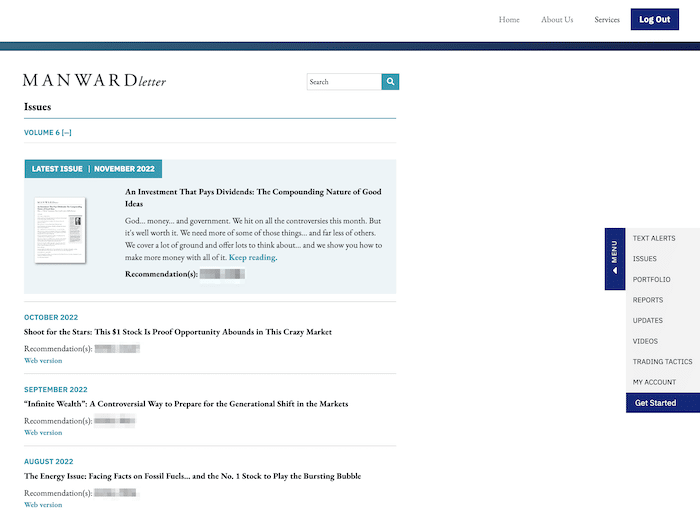
Here’s a quick overview of what you’ll find in the member’s area:
- At the top of the above page, there are links to the latest newsletter issues, which go back as far as January 2020 (so I’m assuming that’s when Manward Letter started).
- Below that, there’s a model portfolio that shows you Snyder’s current stock picks.
- Under that, there’s a list of “special reports” he’s put together, which break down different companies he’s recommending and why.
- Then, toward the bottom of the page, there are links to the different “updates” Snyder has released regarding his recommendations and some videos he’s published.
- Aside from all that, there’s a “getting started” page you can visit to learn how to get started and a “trading tactics” page where Snyder shares weekly insights about the market.
Is it worth $49?
All in all, you get access to a fair amount of content as a Manward Letter subscriber. So from that perspective, the service could potentially be worth it for some.
However, there are some things I’m not a fan of, which mostly relate to the model portfolio setup, “crypto” recommendations, and marketing side of things.
To give you insight into why I say that, let’s discuss what the monthly newsletters involve, and then I’ll break down how the model portfolio works.
Overview of the Monthly Newsletter
The monthly newsletters are the bread and butter of the Manward Letter service.
They basically keep you updated on Andy Snyder’s latest research and highlight his latest recommendations, which are typically stocks but, in some cases, crypto tokens.
Each newsletter usually begins with a brief introduction from Snyder before he highlights a company he’s recommending for the month, which is always different.
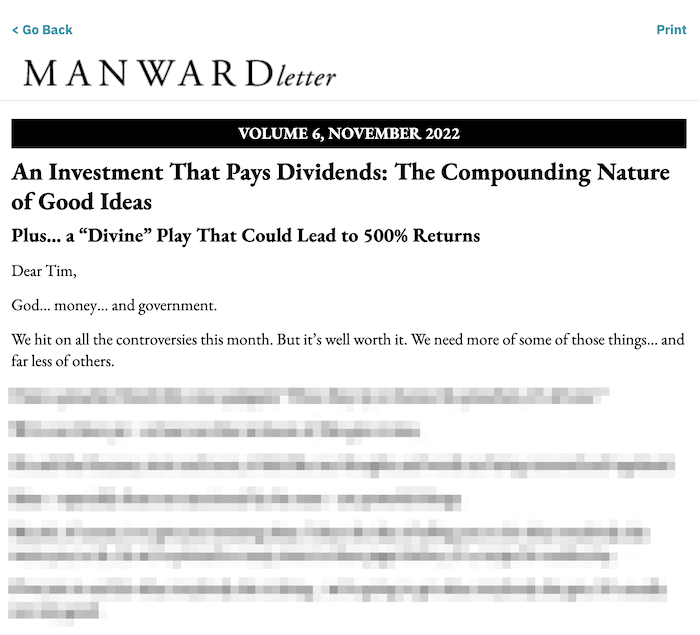
In the latest issue, for example, he highlighted a company in the real estate sector that he’s interested in. In short, he started out discussing real estate in general, then talked about a company he likes, why he likes it, and what he’s recommending.
He also gives you a specific “action to take” at the end of this section, which shows you the company’s ticker and what stop loss he’s recommending.
Aside from that, the newsletter includes a section where Snyder shares his thoughts on the economy, markets, an asset class, and/or shares an update of some kind.
For example, the November 2022 issue included a “crypto update” section where Snyder talked about the cryptocurrency space and what he thinks will unfold.
What’s he predicting? In short, Snyder says he’s a “fan of crypto” and thinks that the “idea of decentralization” will take off. But he predicts that bitcoin will be “regulated away” while Ethereum becomes the “technology of choice.”
He also believes that Ethereum will become the “go-to platform” for “web 3.0.”
Really?
Well, I’m no stock-picking “expert” like Andy Snyder…
And I’ll admit, I have no idea what will become of sensationalized gimmicks like “web 3.0,” so maybe he’s right about that one.
But I do believe that bitcoin is fundamentally superior to the altcoins Snyder seems to be a “fan” of. I also think it’s a lot more ethically sound.
Why?
There are many reasons I say that.
But to sum it up… unlike most “cryptos,” which are decentralized in name only, bitcoin is actually decentralized. It had no issuer, there’s no CEO, and nobody owns or controls it.
Furthermore, given its inherent properties, bitcoin is akin to a digital commodity, whereas most cryptos are more like shady unregistered security tokens with a marketing team.
Not to mention, “web3” is old news now… 😂
Anyway, crypto isn’t the only thing Snyder talks about or recommends.
Sometimes, he discusses the economy and macro topics such as inflation and interest rates. So it ultimately depends on each newsletter issue as to what he talks about.
There’s also a section at the end of each issue from a guy named Joel Salatin, who describes himself as a “Christian libertarian environmentalist capitalist lunatic farmer.”
And while there’s not a lot of investment-specific content in this section, Salatin does share some generally interesting content about living well, saving money, and farm life.
In any case, at the end of the newsletter, there’s an appendix so that you can further your research, some charts related to what was discussed in the newsletter, and a portfolio update section, which I’ll elaborate on now.
Overview of Manward’s “Modern Asset Portfolio”
The basis of how Snyder chooses stocks to recommend to Manward Letter subscribers is his “proprietary” Modern Asset Portfolio theory, which is basically a spin on modern portfolio theory that takes into account, among other things, interest rates.
More specifically, he looks at the 10-year treasury rate minus inflation (aka the real interest rate). And he categorizes this rate into five distinct “levels,” which he says helps determine the mix of assets he recommends to subscribers at any given time.
Here’s a snippet from the “getting started” page where Snyder explains this:
“Our Modern Asset Portfolio is based on what are called ‘real’ interest rates. They are simply the nominal yield of the 10-year Treasury (that’s the one that’s printed in the financial papers every day) minus the rate of inflation. The rate will fall into one of five levels.
- Negative
- 0% to 1%
- 1% to 3%
- 3% to 5%
- Greater than 5%
“Each level calls for its own unique mix of assets. After all, if we compared an economy that has negative real rates with one that has rates above 5%, we’d see some stark differences. One represents a sluggish economy that needs stimulus. The other is on the verge of overheating.”
– Andy Snyder (Manward Letter “get started” guide)
As of writing, there are six “components” (aka types of assets) that make up the model portfolio (or seven if you include options).
And there’s a set “MAP allocation” for each asset.
Here’s a screenshot that shows how Snyder breaks down the portfolio:

As you can see above, there’s an “interest rate monitor” and pie chart showing an overview of how Snyder’s Modern Asset Portfolio is put together.
The domestic and international “blue chips” are large-cap stocks that pay a dividend and are part of a major index, the “buyback dominators” are companies that are buying back their own shares, and the “tech disrupters” are tech stocks.
So, those four “components” are all stocks, and based on the above graphic, Snyder is currently suggesting that they should make up 80% of the model portfolio.
The remaining 20% is supposed to be a mix of gold and crypto.
Worth noting is that Snyder also mentioned a seventh “component” in the getting started guide, options. But the model portfolio doesn’t show any options-related recommendations as of writing. This is basically just something he discusses in different newsletters. And in the “premier” version of Manward Letter ($249 upsell), my understanding is that he provides a specific option recommendation for each stock pick.
How Have the Stock Picks Performed?
The Manward Letter does not display its entire track record in the member’s area, which is an unfortunate and common reality in the newsletter industry.
It is technically possible to figure it out, but the only way to do so would be to dig through countless newsletters and update posts in the member’s area archives, which I didn’t do because… well, that would be insane.
But I can give you a glimpse into the Manward Letter’s 2022 performance.
For starters, the following is a preview of the current model portfolio, which mostly shows you the open (active) recommendations as of November 18, 2022:

Note that I blurred the names of the stocks (and cryptos) above out of respect for the fact that the Manward Letter is a paid service.
However, it’s important to note that the above portfolio isn’t very helpful anyway if you want to know how the service has performed on average since inception.
Why? Because aside from ONE sell recommendation (the pick with the red box around it above), it doesn’t show the entire history of the Manward Letter’s recommendations.
Instead, it shows you the “open” positions, which are still active, and the performance of these changes daily as prices fluctuate.
That said, from when the service began up until July 2022, there was a portfolio “snapshot” at the end of each newsletter that showed you everything – the open positions, recently closed positions, and any new “buy” recommendations Snyder had released.
So, up until July 2022, you could go back through the newsletter archives and figure out how the stock picks had performed from month to month.
But that’s no longer the case.
Now, the same model portfolio, which is updated daily, is shown under all of the newsletters from August 2022 onward. And that’s the one you can see above.
Anyways, to give you an idea of how the service has performed, I went through the newsletter archives from January 2022 to July 2022. And what I found was that there were 10 “sell” recommendations made during that time period.
Below are screenshots I took that show you how these picks worked out (you can click any of the images above to see a full-sized version):
Based on the above portfolio snapshots, eight of the Manward Letter recommendations are down, and two are up in the first half of 2022.
What about the closed recommendations after that?
Well, because of the change Manward Press made to the model portfolio in August, piecing the Manward Letter’s performance together from that point on is quite the task.
Here’s what you’d need to do…
- First, you’d have to dig through (currently) 17 different “update” pages in the member’s area to find out what “sell” recommendations Snyder has published.
- Then, you’d need to look up the individual tickers to find out what the price was when he suggested selling each asset, as that info isn’t displayed.
- And then… you’d have to figure out when Snyder originally issued the “buy” recommendation for each stock since that info isn’t shown on the update page either, which means you’d need to dig through the newsletter archives.
So my point is that the process of figuring out the service’s track record from August 2022 onward is currently way harder than it should be.
And needless to say, I am not a fan of this.
I don’t know about you, but I’m of the opinion that newsletter services with a model portfolio should make it easier for subscribers to verify their overall track record.
Who Is Andy Snyder, Anyway?
Andrew (Andy) Snyder is the founder of Manward Press, the Baltimore-based company behind Manward Letter and several other services.

And as a side point, while Snyder started this company in 2016, it’s actually owned by Agora, a consortium founded by Bill Bonner that owns many individual publishing firms.
Anyway, according to his Manward Press bio, Snyder “cut his teeth at an esteemed financial firm with nearly $100 billion in assets under management.”
I don’t know what firm his profile is referring to, as it’s not mentioned anywhere on the page, and I was unable to find anything by researching this. But Snyder apparently went from that job to sharing “outspoken market commentary” in the mid-2000s.
And now he runs Manward Press, LLC.
Aside from the Manward Letter, the company runs a site called Manward Financial, where Snyder and other contributors share daily market commentary.
And the company sells several high-ticket stock advisories: Alpha Money Flow, Venture Fortunes, GVI Investor, and Manward Novus.
Based on what was discussed in the October 2022 issue of Manward Letter, Snyder also runs (or at least participates in) various “gatherings” for Manward subscribers, which are hosted at Joel Salatin’s Polyface Farm in Virginia.
Here’s a snippet from a newsletter about what a recent gathering involved:
“At the beginning of September, we hosted a memorable gathering for Manward subscribers at Joel’s world-famous Polyface Farm.
“Over two days of kinship and learning, Joel, Andy and our special guests shared their thoughts and wisdom on free markets… a free society… and where things are headed.”
– Snippet from October 2022 Manward Letter issue
From what I understand, these are basically paid conferences where Snyder and others share investment tips and market commentary.
Does he have a good track record?
The Manward Press website suggests that Andy Snyder has made numerous accurate predictions and recommended some great stocks over the years.
However, as I explained earlier, it’s very difficult to know how well his Manward Letter picks have performed on average, let alone how they’ve done across all of his services.
That said, before joining Manward Letter, I looked into numerous stock teaser presentations Snyder has released and uncovered a bunch of his picks in the process. For example, I’ve looked into his “No. 1 EV stock,” his “No. 1 lidar stock, and his “XRI” metaverse pick.
Basically, what I did was use the clues Snyder shared publicly to guess what his picks were, and you can see my research on his picks here if you want to know more.
What is Snyder predicting now?
The most recent Andy Snyder stock teaser presentation was released in October 2022, and that centers around the so-called “death of cash,” which is an idea Snyder has been talking about for a while now. This is essentially just the latest iteration of his thesis.
What’s it about? In short, Snyder believes that cash is about to be replaced by a “centralized, government-controlled, trackable digital dollar.”
And he’s predicting that the government will make “an important announcement” about the “state” of money on December 14.
“I’m talking about replacing physical dollars with a centralized, government-controlled, trackable digital dollar.”
[…]
“Any day now, the government could force you into a digital currency, reducing a whole host of your freedoms.
“There’s no time to waste.
“On December 14, I predict the government will be making an important announcement about the state of your money…”
Source: https://pro.manwardpress.com/p/DECONTO99MWLLT2YRDMLALT/EMWLYBCC/Full
During the same presentation, Snyder also shared a free pick, MDU Resources.
Here’s what he said about that:
“Everyone watching should take a look at MDU Resources (ticker symbol MDU).
“It’s an American electricity provider valued at under $6 billion…
“So it’s got a lot of room to grow.
“MDU produces its own natural gas, piping it through a well-established network of pipelines.”
[…]
“And I’m projecting its stock could double, triple and even quadruple before the end of Biden’s presidency.”
That’s quite a bold “projection,” if you ask me.
But I guess “how bold” would depend on how long Biden remains president, as his time in office could theoretically last until almost the end of the decade.
In any case, what I’ve shared should help give you an idea of the companies Snyder has recommended. But ultimately, what he recommends is always evolving, so the best way to see his latest picks would be to check out his Manward Letter service.
Is Manward Press Legit?
Manward Press, LLC is a real company, and I haven’t found any proof that it’s scamming people. Furthermore, the company states in the order confirmation email that the Manward Letter service comes with a 365-day refund policy.
Although on that last point, based on a comment in this review (and looking at the order page for other services the company runs), refunds may not apply to all of their services.
It is very common for companies in the newsletter industry to have a solid refund policy on their low-ticket services, like the Manward Letter, but not offer one on their higher-priced services. And that appears to be the case with Manward Press.
Another thing worth mentioning is that the Manward Letter service automatically renews at $79 after the first 12 months.
To their credit, Manward Press is actually more upfront about this recurring charge than many other services I’ve reviewed. However, unlike most services I’ve joined, there is no option to turn off the auto-renew setting in the member’s area.
Even on the “customer self service” page… there’s no way to disable the auto-renew, cancel the service, or request a refund. I could be missing something here, but I’m pretty sure you have to contact the company about this stuff.
Anyway, aside from that, one thing to be wary of is that there is quite a bit of marketing built into the newsletters designed to upsell you into their higher-priced services.
For example, the “crypto update” section of the November 2022 newsletter I discussed earlier repeatedly mentioned a crypto-focused service called Manward Novus, and the only way to join that service is to become an “executive” member for $5,075.
Not only is that an insane price tag, but that service is all about crypto, which is generally something that I suggest being extremely cautious about.
Manward Letter Pros and Cons
Pros:
- For $49, you get access to a fair bit of content. There are monthly newsletters, investment-related videos, and a weekly “trading tactics” section where Snyder shares his latest thoughts on the market. All in all, you get a fair chunk of value for the price.
- According to Manward Press, the Manward Letter has a 365-day refund policy in place. I haven’t tested this myself, but I doubt they’d have been in business since 2016 and not be honoring this.
- I can only speculate as to how effective Snyder’s so-called “MAP” strategy is, but I do think it’s generally cool that subscribers are given an idea of how to build a portfolio, with specific percentage allocations and the like.
- Joel Salatin’s section of the newsletter makes the Manward Letter unique from pretty much every other service I’ve tried. Not everyone will like it, but those interested in the idea of sustainable living and libertarianism (that sort of thing) may find it interesting.
- From what I’ve seen, Snyder typically recommends using a trailing stop loss on the stocks he recommends, which may help limit potential losses.
Cons:
- It is far too difficult to piece together the complete track record of the Manward Letter service, especially given the new model portfolio setup. I think the company should be more transparent about how the recommendations have performed since inception.
- This may not be a “con” to some folks, and fair enough, but I am not a fan of “crypto,” given the sheer number of scams in the space. And options trading, which is another part of the Manward Letter service, can also be extremely risky.
- The marketing used to promote Manward Letter is, in my opinion, very sensationalist. Some newsletter companies use greed, while others, like Manward Letter, use fear and “doom and gloom” narratives to sell more newsletters.
- The newsletters have multiple upsells “built-in” to them. There’s nothing wrong with a company selling higher-priced services, of course, but it’s obvious after reading several newsletter issues that one of the main goals is pitching you more stuff.
- For whatever reason, Snyder doesn’t give you a “buy up to” price like most newsletters. He typically just shares the ticker and says to buy “at the market’s price,” which some subscribers may not like, given the lack of clarity.
- It doesn’t appear to be possible to turn the auto-renew function off, cancel the service, or request a refund for Manward Letter without contacting the company.
Bottom Line
Overall, I think the Manward Letter is an okay service for the price, and it may suit those interested in following Snyder’s “modern asset portfolio” strategy.
I also think that those who align with libertarian and conservative values may find the newsletters interesting, as this is primarily the folks it caters to.
What puts me off the most, however, is the crypto stuff.
Now, full disclosure, I do hold some bitcoin.
So you should probably assume that my take on crypto is biased.
But given how many scams exist in this space, my enthusiasm for this service is dampened by Snyder’s “pro-crypto” stance. Especially since he pitches you on other, higher-priced crypto services within some of the Manward Letter issues.
Also, given how difficult it is to verify the Manward Letter’s track record since inception, I am left wondering how well Snyder’s “MAP theory” strategy (actually) works.
At the end of the day, there’s no guarantee that any service will help you make money, but I think that the company making this info more accessible would benefit subscribers.
Anyway, that’s my take.
What you decide to do is up to you. But I hope what I’ve shared in this review helps make your decision on whether or not to join a little easier. Thanks for reading!

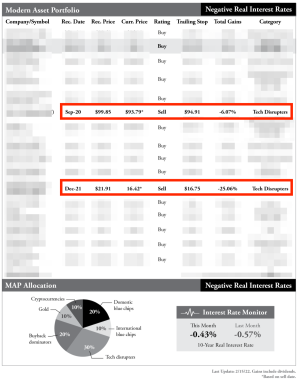
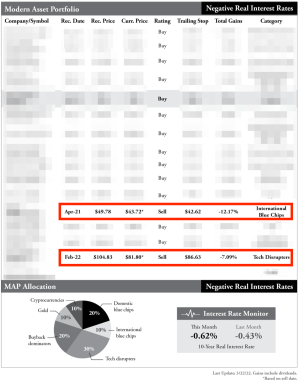
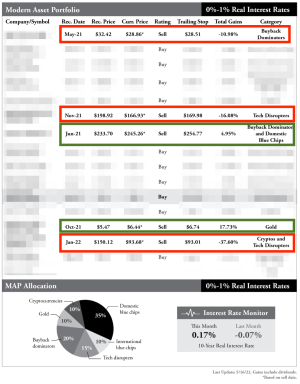
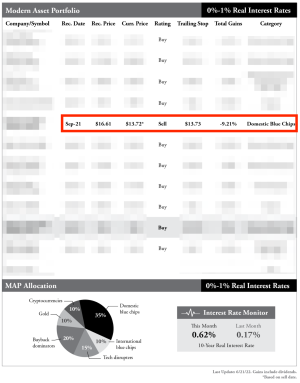




Please note: By submitting a comment using the above comment form, you confirm that you agree with the storage and handling of your data by this site as detailed in our Privacy Policy.